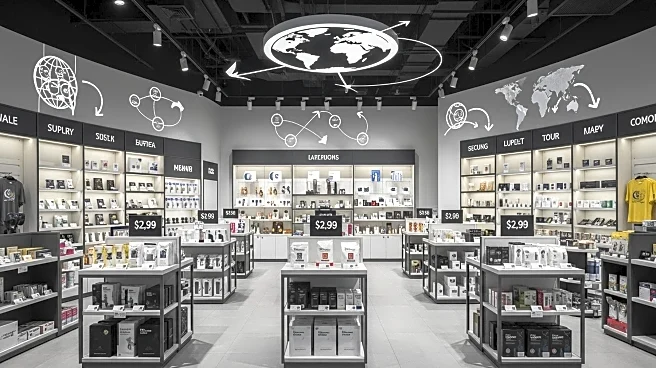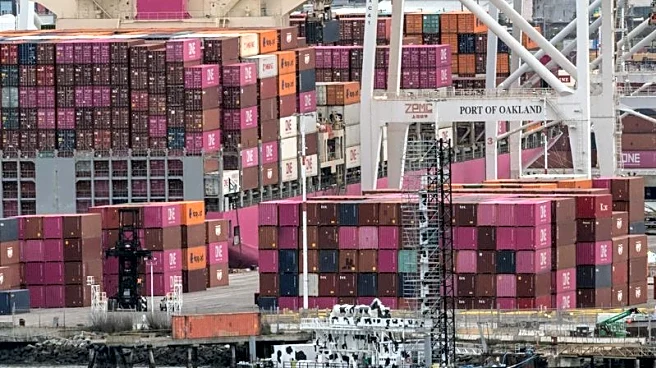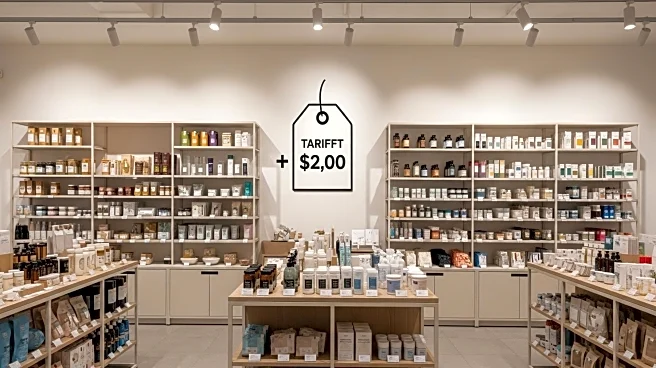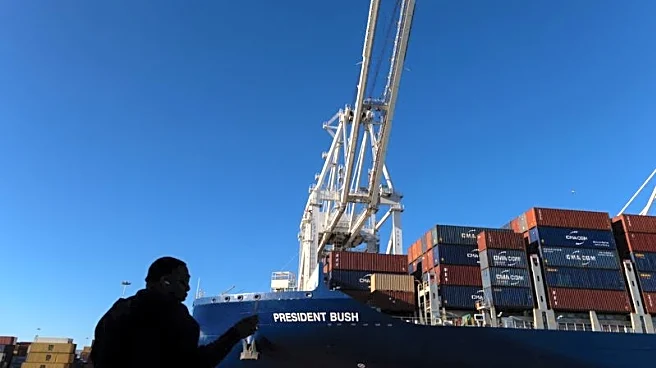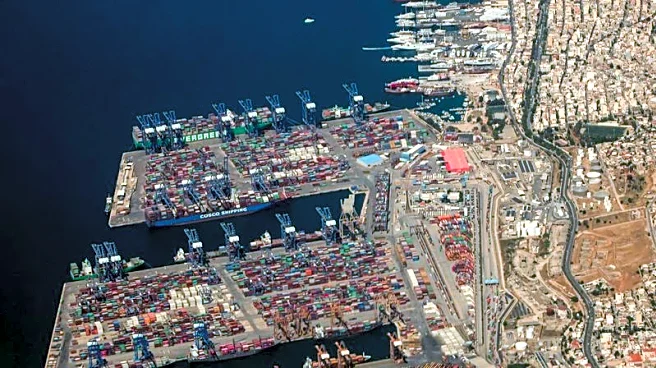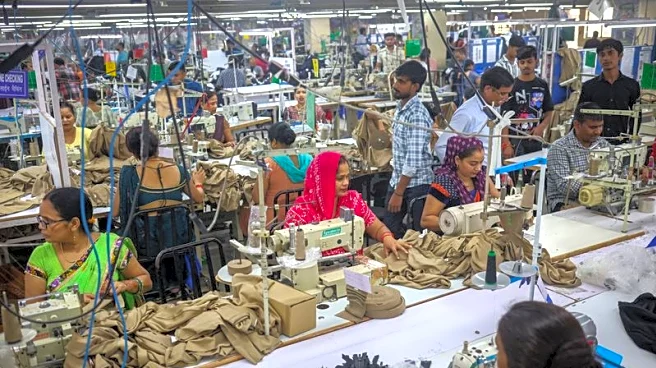What is the story about?
What's Happening?
The retail sector in 2025 is facing significant challenges due to high U.S. tariffs, which have reached 18.3%, the highest since 1934. These tariffs are reshaping pricing strategies and margin management across the industry. Retailers are responding by diversifying supply chains and adopting dynamic pricing models to mitigate costs. For instance, Best Buy has reduced its reliance on Chinese imports from 60% to under 25% by 2026, while Walmart is negotiating price cuts and expanding partnerships in Southeast Asia. Dynamic pricing, supported by AI and machine learning, is being used to adjust prices in real-time, balancing cost absorption and consumer sentiment.
Why It's Important?
The strategic adaptations by retailers highlight the sector's resilience in navigating trade policy pressures. The shift away from China-centric supply chains reduces exposure to tariffs and enhances resilience against geopolitical disruptions. Dynamic pricing allows retailers to maintain competitiveness and profitability despite increased costs. These strategies are crucial for sustaining growth and protecting margins in a high-tariff environment. For investors, identifying companies that effectively implement these strategies is key to ensuring long-term competitiveness and market share retention.
Beyond the Headlines
The broader economic implications of high tariffs include a projected 0.5 percentage point reduction in annual U.S. GDP growth and a persistent 0.4% smaller economy in the long run. This underscores the importance of continuous innovation in cost management and operational flexibility for retailers. The divergence in sector-specific impacts, with electronics facing greater challenges than general merchandise, highlights the need for tailored strategies to address unique vulnerabilities.
AI Generated Content
Do you find this article useful?
